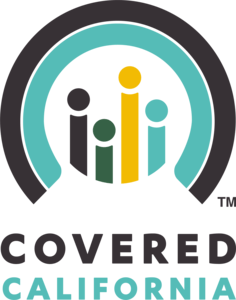
Glossary of Health Insurance Terms: Mastering Healthcare Speak
Welcome to the intricate world of healthcare, where understanding the language of insurance is not just helpful, but essential for making empowered decisions. We recognize that diving into the depths of healthcare terms can be overwhelming, which is why we’ve crafted this blog post as a foundational guide, designed to complement and enhance the wealth of information provided in our existing resources.
In this post, we’ll unfold the complex tapestry of prescription drug coverage, zeroing in on the critical concepts of formularies and tier systems that govern your medication costs. By demystifying these terms, we aim to grant you a more robust understanding of the healthcare landscape, setting a solid ground upon which you can confidently build your insurance knowledge.
This is more than just an isolated piece of information; it’s a connective tissue that links to our broader series of posts. As you journey through this guide, you’ll find seamless connections to related topics, creating a cohesive learning experience. We’ll ensure that you’re not just passively absorbing information, but actively engaging with the material to piece together the puzzle of healthcare terminology.
By the end of this read, you’ll be equipped to navigate the maze of healthcare terms with ease, making the leap from learning to applying this knowledge in practical, real-life scenarios. Whether you’re selecting a new health insurance plan, comparing medication costs, or just seeking to understand your current benefits better, this post will serve as your compass.
So let’s embark on this educational voyage together, and move one step closer to making informed and confident insurance decisions that cater to your health and financial well-being.

Basic Healthcare Terms
- Premiums are the monthly fee you pay for your health insurance coverage. This is like a membership fee that ensures your enrollment in a health plan.
- Deductibles are the amount you pay out of pocket for covered healthcare services before your insurance plan starts to pay. A higher deductible usually means a lower premium.
- Copayments or copays are the fixed amount you pay for a covered healthcare service, like a doctor’s visit, when you receive the service.
- Coinsurance is your share of the costs of a covered healthcare service, calculated as a percentage.
The balance between these costs can significantly affect your annual healthcare expenses. Choosing a plan with a low premium but high deductible might be cost-effective if you rarely need medical care, while if you often need medical services, a higher premium but lower deductible plan might be more beneficial.
Types of Health Insurance Plans
- HMO (Health Maintenance Organization) plans usually limit coverage to care from doctors who work for or contract with the HMO and generally won’t cover out-of-network care except in an emergency.
- PPO (Preferred Provider Organization) plans provide more flexibility when picking a healthcare provider and you don’t need a referral to see a specialist.
- EPO (Exclusive Provider Organization) plans allow you to use the providers within the plan’s network, but not outside of it, without a referral for specialists.
- POS (Point of Service) plans combine features of HMOs and PPOs, including provider restrictions and the need for referrals.
Each of these plans affects your choice of healthcare providers, out-of-pocket costs, and how you receive services, making it imperative to choose according to your healthcare needs.
Understanding Your Health Coverage
Navigating the healthcare system requires a good understanding of your health coverage. This knowledge is fundamental to making the most of your benefits and avoiding unexpected expenses. Here’s a guide to understanding the key components of your health insurance policy documents and how to determine the services covered along with the extent of coverage.
Explanation of Policy Documents and Summaries
When you enroll in a health insurance plan, you receive a set of documents that detail the nitty-gritty of your coverage. These typically include:
- Summary of Benefits and Coverage (SBC): This is a concise document that outlines the basic coverage details and costs of your health plan. It includes the covered health benefits, the cost-sharing rules, and coverage limitations and exceptions.
- Evidence of Coverage (EOC): A more comprehensive guide than the SBC, this document provides in-depth details about what the plan covers and does not cover, the procedures to receive benefits, and the costs associated with the benefits.
- Policy Certificate or Insurance Policy: This is the contract between you and the insurance company. It lays out in legal terms what is covered, what is not, your rights as a policyholder, and the duties of the insurance company.
It’s important to review these documents carefully when you first enroll in a plan and to keep them for reference when you need care. They can often be found online on your health insurer’s website, or you can request a paper copy.
How to Determine What Services are Covered and the Extent of Coverage
To understand what services are covered and the extent of coverage, you should:
- Review the SBC: Start with the Summary of Benefits and Coverage, which will give you a snapshot of what services are generally covered. It will typically list common medical events and show you the cost-sharing details for each.
- Check the EOC: For more detailed questions about coverage, refer to the Evidence of Coverage. This document can help you understand complex aspects of your coverage, such as the number of physical therapy sessions covered per year or whether a particular surgery or procedure is covered.
- Look for a ‘Covered Services’ Section: This part of your policy documents specifically lists all the services that are covered by the insurance plan. It also often includes a list of exclusions, or what is not covered.
- Understand Service Limitations: Some services may be covered but with limitations. This could be in the form of a maximum number of visits, certain qualifying conditions, or pre-authorization requirements.
- Use the Insurer’s Resources: Most insurers have customer service lines and online portals where you can check your coverage details. They can clarify whether specific services are covered and how much you might have to pay.
- Pre-authorization: For certain services, your insurer may require pre-authorization or prior approval. This means that before you receive the service, your provider must get consent from your insurer that the service is medically necessary.
Being proactive about understanding your health coverage can save you time and money. It helps you make informed decisions about seeking healthcare services and can prevent surprise bills for services you assumed were covered. Always keep your policy documents accessible, review them regularly, and don’t hesitate to reach out to your insurer for clarification when needed. Your health coverage is a powerful tool when you know how to use it effectively.

When it comes to understanding prescription drug coverage, two of the most important concepts to grasp are the formulary and the tier system used by health insurance plans. These components dictate the availability and cost of medications under a particular health insurance policy, affecting how much you’ll pay out of pocket for your prescriptions.
Formulary
A formulary is essentially a list of prescription drugs that your health insurance plan has agreed to cover. Insurance companies work with pharmacists and doctors to compile this list based on the medications’ effectiveness, safety, and cost. The formulary is divided into categories based on drug types, such as antibiotics or beta-blockers, and is regularly updated to reflect new research, market changes, or new drug entries.
Formularies usually include both generic drugs (chemical equivalents to brand-name drugs that are not covered by a patent and thus less expensive) and brand-name drugs. Some formularies might also list specialty medications, which are often used to treat chronic or complex conditions and can be quite costly.
Tiers
The tier system is how health insurance companies categorize prescription drugs covered in the formulary to determine the amount of cost-sharing for which a patient is responsible. Here’s a general breakdown of how these tiers work:
- Tier 1: This is the lowest tier, typically including generic medications that are the least expensive. Copayments for drugs on this tier are usually the lowest.
- Tier 2: This tier often includes preferred brand-name medications that are more expensive than generic drugs but are still preferred over other brands by the insurance provider. The copayment for these drugs is higher than Tier 1.
- Tier 3: Non-preferred brand-name medications are usually placed in this tier. These drugs are more expensive and will often have a higher copayment or coinsurance rate than drugs in the first two tiers.
- Specialty Tier: Some plans may also have a special tier for very high-cost prescription drugs, such as those used to treat rare conditions or advanced cancers. These typically have the highest level of cost-sharing, sometimes structured as a percentage of the drug’s cost (coinsurance) rather than a fixed copayment.
How Formulary and Tiers Affect You
The formulary and tier system can significantly affect the cost of your medications. If your doctor prescribes a medication that is not on your plan’s formulary, you may be responsible for the full cost of the drug. Additionally, within the formulary, choosing a drug from a lower tier will generally save you money. This is why it’s common for doctors to prescribe generic drugs when possible, as they are equally effective for most patients and are more affordable.
It’s also important to note that even if a medication is listed on the formulary, it may still require prior authorization or step therapy before the insurance company agrees to cover it. Prior authorization means your doctor must justify the need for a specific medication before the insurance company will cover it. Step therapy requires trying one or more similar, lower-cost drugs before the insurer will cover the prescribed medication.
Understanding your plan’s formulary and the tier structure is crucial for managing your medication costs effectively. You can typically find this information on your health insurance provider’s website or by contacting them directly. If you’re prescribed a medication that’s too costly, ask your doctor if there are alternative medications or if they can help with obtaining a prior authorization for necessary drugs that are higher on the tier list.

Terms Related to Healthcare Providers
In-network vs. Out-of-network:
Understanding the difference between in-network and out-of-network is crucial when it comes to managing your healthcare expenses.
- In-network Providers are part of your health insurance plan’s network and have agreed to provide services at a discounted rate. You will generally pay less for services from in-network providers.
- Out-of-network Providers have not agreed to the contracted rates with your insurance plan. Services from out-of-network providers will typically cost more, and in some cases, may not be covered at all.
Primary Care Provider (PCP) vs. Specialist:
- Primary Care Provider (PCP): A PCP is your main healthcare provider for non-emergency situations, providing comprehensive care, guiding you through the healthcare system, and referring you to specialists when necessary.
- Specialist: Specialists are doctors with advanced training in a specific area of medicine. Typically, a referral from your PCP is needed to see a specialist for care.
Healthcare Financial Assistance Terms
- Subsidy: A subsidy is financial assistance designed to reduce the cost of your health insurance premiums. This assistance commonly takes the form of tax credits and is accessible through the Health Insurance Marketplace, with the amount determined by your income and family size.
- Tax Credits: Specifically, the Advanced Premium Tax Credit is a federal subsidy that directly lowers your monthly health insurance premiums. This tax credit is available to qualifying individuals who enroll in insurance plans via the Health Insurance Marketplace.
- Out-of-Pocket Maximum: This is the most you have to spend for covered services in a year. After you spend this amount on deductibles, copayments, and coinsurance, your health plan pays 100% of the costs of covered benefits.
These terms are vital for understanding how you can make healthcare more affordable. They can significantly lower the upfront costs of healthcare premiums and the overall costs you might incur throughout the year.
Navigating the Health Insurance Marketplace
- Open Enrollment Period: The period when individuals can enroll in a health insurance plan. Outside of this period, you typically need a qualifying life event to enroll.
- Special Enrollment Period: A time outside of the open enrollment when you can sign up for a plan if you have certain life events, like losing health coverage, moving, or having a baby.
- Qualified Health Plan: An insurance plan that’s certified by the Health Insurance Marketplace, provides essential health benefits, follows established limits on cost-sharing, and meets other requirements.
The Health Insurance Marketplace is a service that helps people shop for and enroll in affordable health insurance. The federal government operates the Marketplace, available at HealthCare.gov, but many states run their own Marketplaces.
Glossary of Advanced Healthcare Terms
- Capitation: A payment arrangement for health care service providers. They are paid a set amount for each enrolled person assigned to them, whether or not that person seeks care.
- Risk Pool: The group of individuals whose medical costs are combined to calculate premiums. A larger risk pool, like those seen in employer-sponsored plans, helps to lower the risk for insurers.
Final Thoughts
In conclusion, diving into the details of healthcare terminology isn’t just an academic exercise—it’s a practical tool for making informed decisions about your health insurance options. The terms we’ve outlined are keys to unlocking a more transparent and manageable healthcare experience. By familiarizing yourself with this vocabulary, you have laid the groundwork for navigating the complexities of healthcare with greater ease and confidence.
Remember, the clarity you gain today will illuminate your healthcare choices tomorrow. Keep this guide handy as a reference when evaluating plans, and never underestimate the value of understanding your coverage. As you continue on your healthcare journey, take pride in the knowledge you’ve gained here and let it guide you toward choices that align with your health needs and financial goals.
This article was written by Mark Svetlik, with the assistance of automation technology. The content has undergone thorough editing and fact-checking to ensure complete accuracy.














































